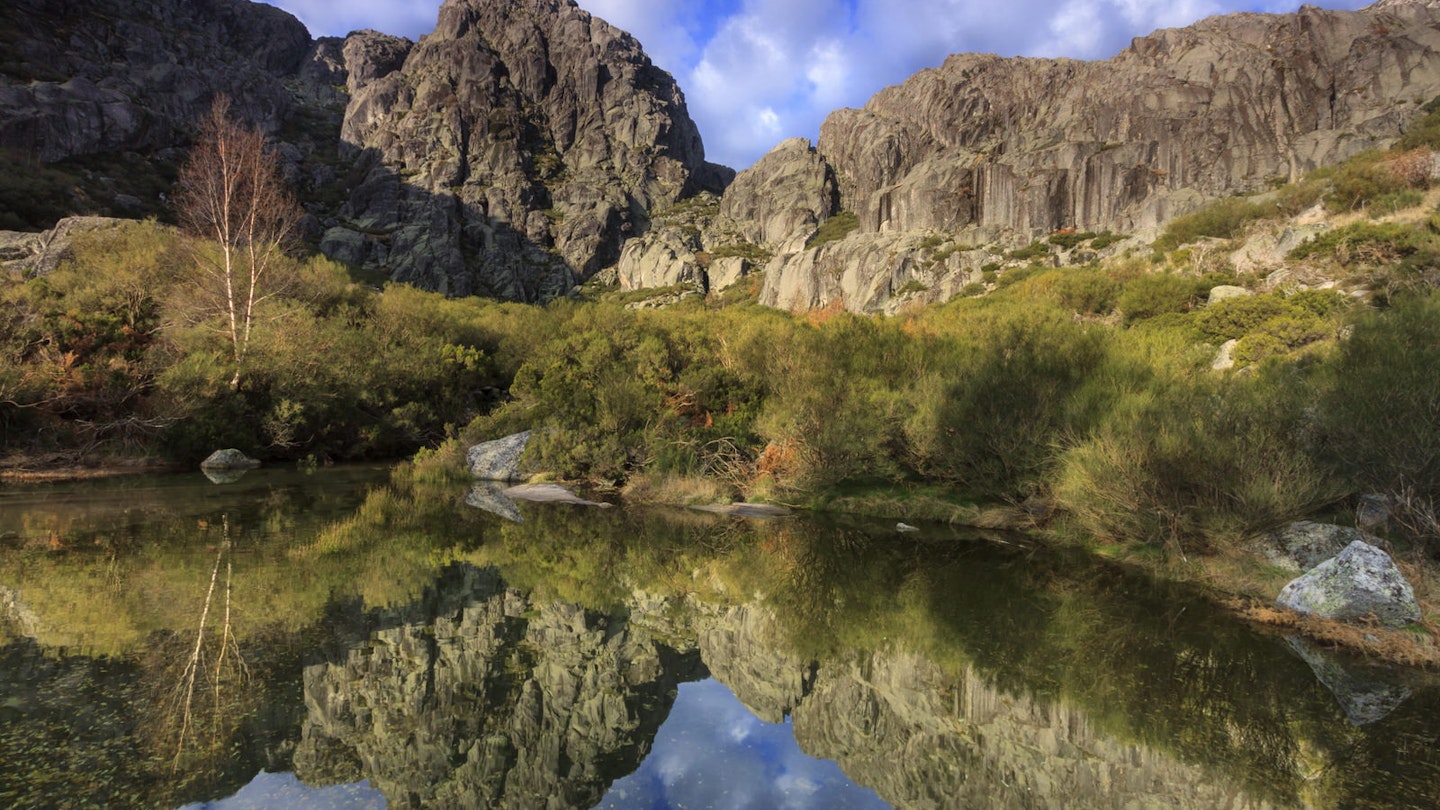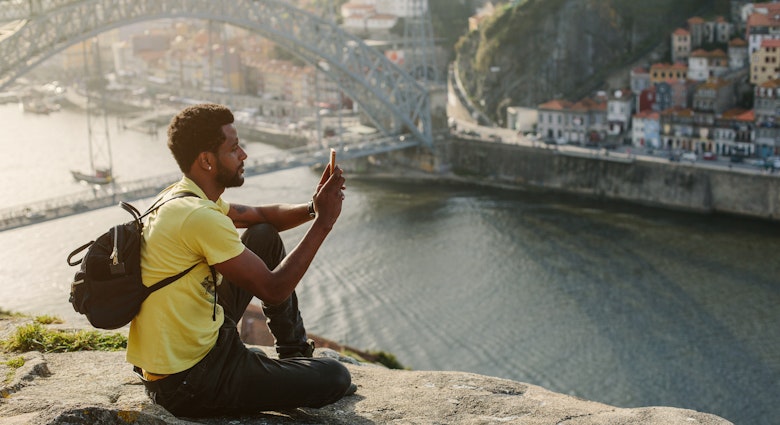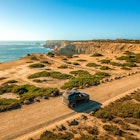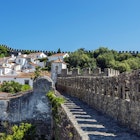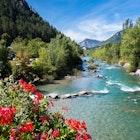Despite its incredible natural features – thick forests, hidden lakes and a lofty peak – Portugal's Serra da Estrela mountain range is often overlooked. It is beautiful, for sure, and offers great opportunities for exploring nature. But look closely and you’ll discover quirkier jackpots, including the region’s own cheese, dog species and design hotspot.
Located in the middle of Portugal, the Parque Natural da Serra da Estrela is easy to access. You can reach one of the region’s main villages, Manteigas, via several routes; the most scenic way is from Covilhã, where the road rises steeply through pine forests before reaching a boulder-topped plateau.
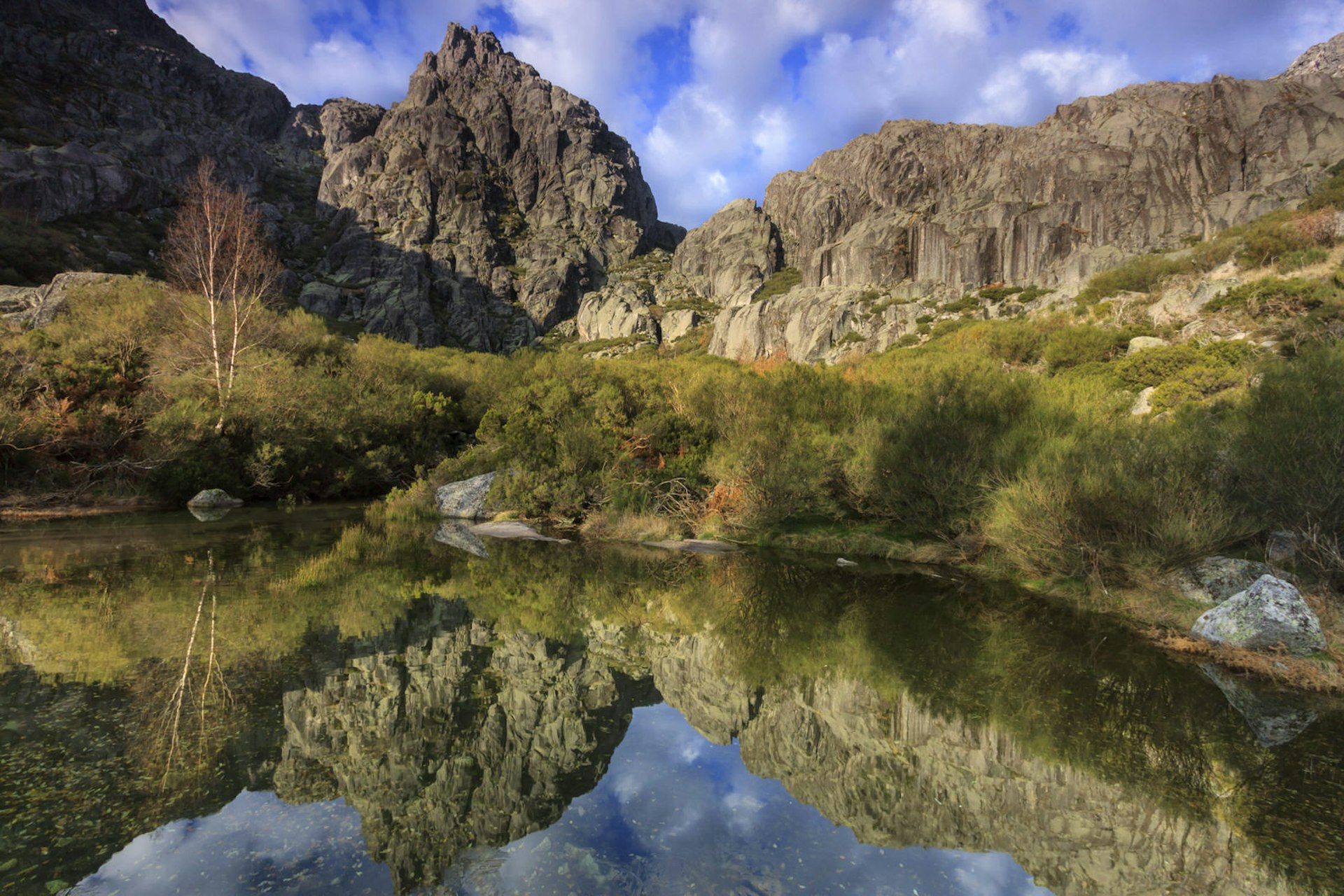
Take a selfie at Torre, Portugal’s highest peak
Visiting Torre, mainland Portugal’s highest peak (1993m), is a rite of passage for many Portuguese travellers. Ski crowds flock here in winter, while at other times of year visitors come for a selfie by one of the radar stations: giant ‘golf balls’ that are so retro they could beam you back to the 1950s.

Meander along the Zêzere Valley
The real beauty lies a couple of kilometres from here, with views of – and a journey along – the Zêzere Valley. It’s one of Portugal’s greatest road trips, best done in spring and summer when the roads are free of ice. East of Torre, the road corkscrews for several kilometres, before straightening out to head north along the valley towards pretty little Manteigas.
The remarkable U-shaped, glacial valley was formed more than 20,000 years ago. Its landscape is strewn with granite outcrops, and here and there, the wiggly lines of man-made terraces traverse the hill. Below is the Zêzere River (the Serra da Estrela is the source of two other rivers, Mondego and Alva), where small shepherd huts dot the shore.
The area is rich in flora and fauna, with over 150 bird species, plus the likes of stags and mountain lizards, otters and wolves.

Hit the Trilhos Verdes trail network
There’s no better way to experience the region’s lakes, peaks and gullies than on this superb 200km network of green trails. The walks, with such evocative names as ‘Poço do Inferno’ (Hell’s Well, a lovely waterfall), take between one and eight hours. While many head through cork forests or granite-strewn plateaus, others incorporate cultural landmarks such as churches and historic wells. En route, you can plunge into the various natural lagoons and waterfalls.
Our favourite trail, the Beech Route, passes under a canopy of massive beech trees before emerging at the tiny St Lawrence chapel. You then descend through thickets of sycamore and Douglas fir trees.
For those who prefer pedalling, hit the trails on mountain bikes; or for an upper body workout, rent a kayak and paddle from the kiosk at Represa de Vale Rossim, the lake just beyond the village of Penhas Douradas.

Drool over Serra’s guard dog
The cão de Serra da Estrela, the local shepherd dog, is believed to be one of the most ancient breeds on the Iberian Peninsula. These days, shepherds still use them to guard their livestock (the dogs’ spiked collars dissuade wolves should they attack). If you’re lucky, you might pass a shepherd with his dog and herd while you are wandering on one of the beautiful trails; the sheep here produce the milk that is used to make the region’s Queijo Serra da Estrela, a rich and gooey artisanal cheese that contains a thistle in place of rennet.
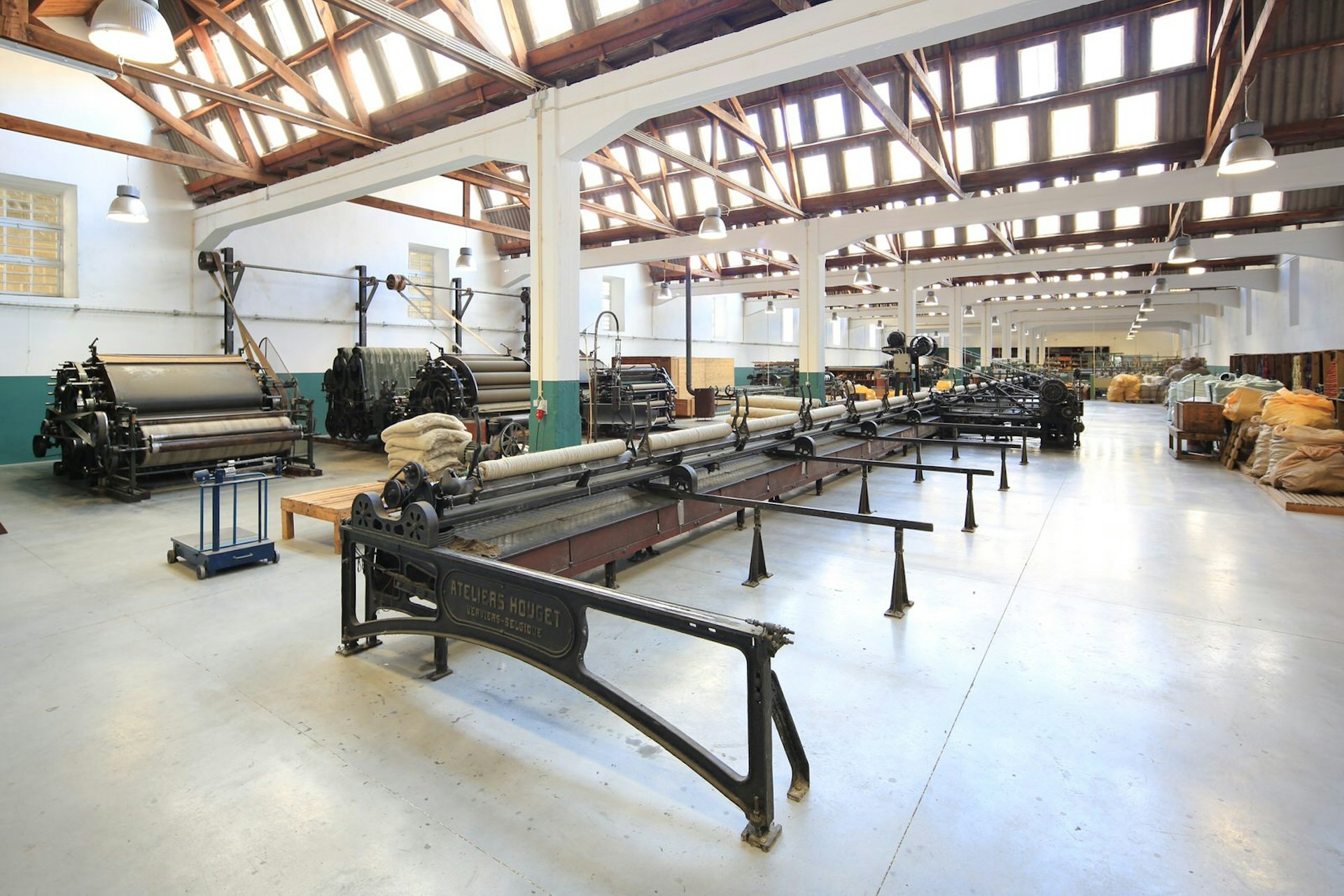
Go contemporary at the Burel Factory
When in the village of Manteigas, don’t miss a tour of the Burel Factory. After all, for centuries wool has been a part of Portuguese artisanal and industrial culture; throughout the 18th and 19th centuries, large manufacturers were based here. In recent years, a creative couple rehabilitated one of the factories, using original techniques and machines to make burel, a woollen fabric. This felt-like material of eye-popping lime-green, mauve and orange hues is then incorporated into an array of furniture and home decor items. Other products, such as the pure woollen blankets, feature the original factory’s retro, mid-century patterns. (Tip: if you miss a tour here, Burel Mountain Originals shops are located in both Lisbon and Porto).

Sleep and dine in stellar surrounds
The stunning Casa das Penhas Douradas is the park’s other star. This small luxury guesthouse, located in Penhas Douradas, just north of Manteigas, evokes its natural surroundings in its simplicity and construction from environmentally-friendly materials, such as cork. If you think you recognise the mid-century decor, you’re right: the same folk run the Burel Factory. The accommodation even has an indoor-outdoor swimming pool and, after a day of hiking, you can relax over a massage or spa treatment. Even if you’re not staying there, drop in for a top-notch gourmet meal, or request a picnic lunch – great for munching along the way, or by the shores of the nearby lake.

Hang out in historic villages
Both within the park, and surrounding its base, are 12 fascinating villages, all designated as aldeias historicas (historic villages). Of these, we love Monsanto, where small stone cottages sit next to granite rock formations, as though a giant has scattered a toy town set amongst his marble collection.
One of Portugal’s most beautiful routes links Manteigas with Piódão, another of the villages. Although it’s only 70km long, allow over two hours to tackle the winding roads and absorb the landscape of pine trees, streams and steep agricultural terraces. Piódão itself comprises quaint cottages made entirely of schist; the blue-and-white church, Nossa Senhora da Conceição, is a beacon amid the grey stone. It’s easy to see why many have compared the village to a nativity set.
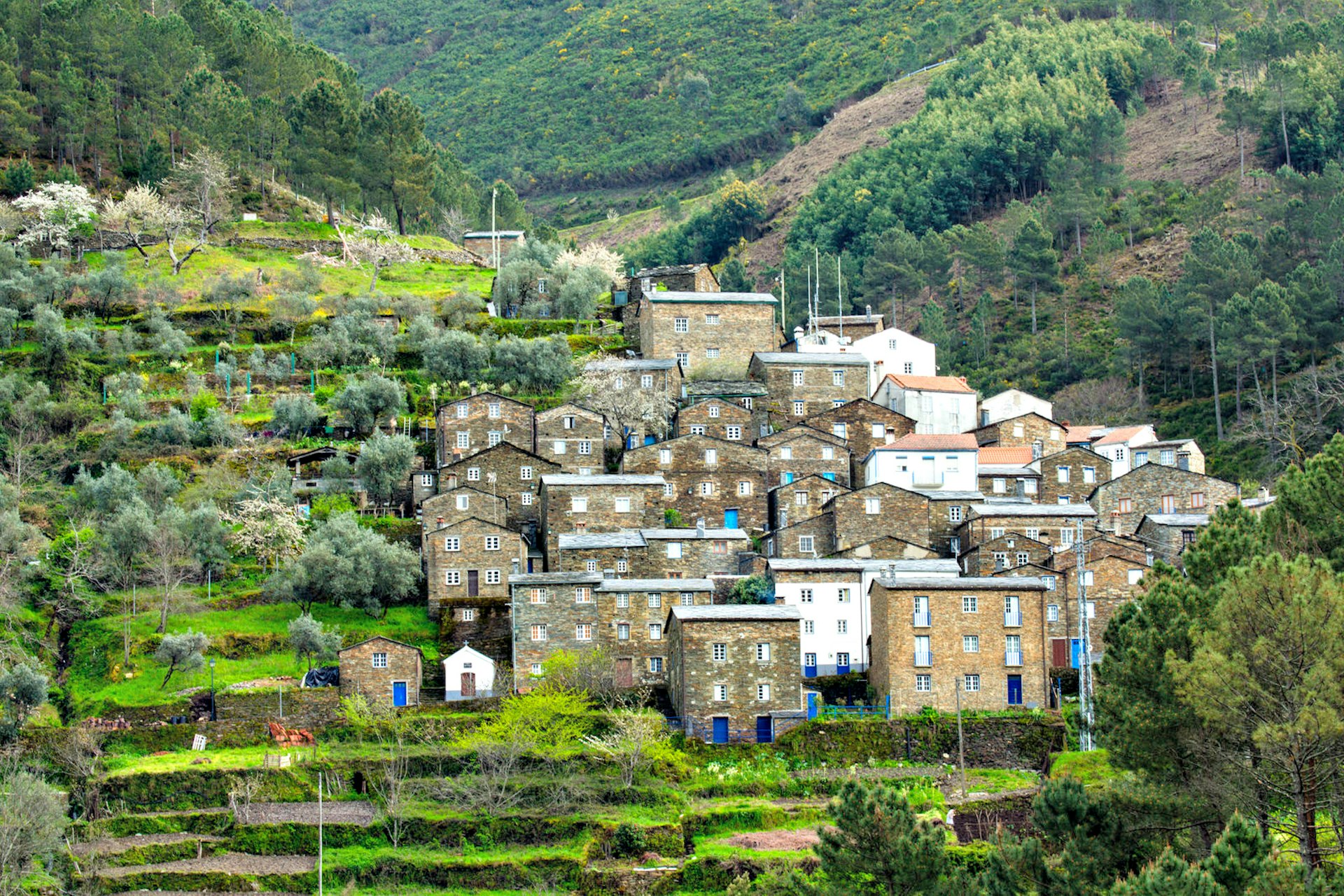
Want more?
For further insight into the park, visit the Centro de Interpretação da Serra da Estrela; there are two locations, one in Seia and the other in Manteigas. Informative 3D models showcase the Serra’s geology, natural habitats and flora and fauna, and an informative film depicts the valley as though you’re flying overhead.

